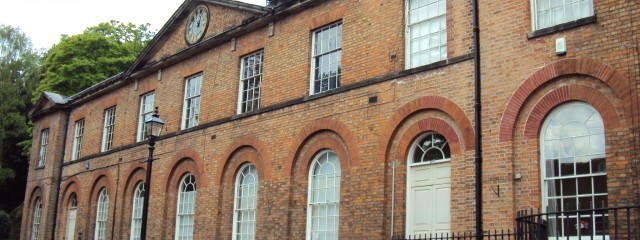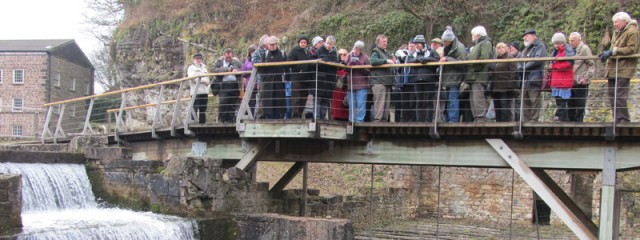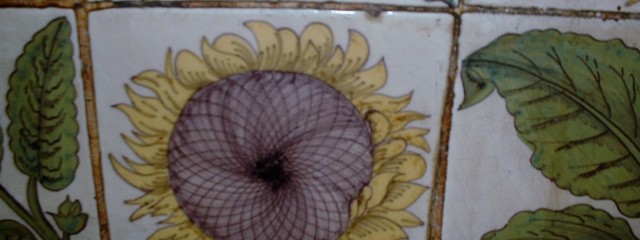Topic
Buildings
St Matthews to Walter Evans – the detective work
Staff and pupils of Walter Evans Primary School joined with the Darley Abbey Historical Group to investigate factors behind the transition from St Matthew’s School to Walter Evan’s Primary School. Evidence was gathered from the County Archives at Matlock, Derby Local Studies Library, the Diocesan Education Office and from interviews with pupils and teachers, past and present.
Read MoreFrom St Matthews to Walter Evans – as one door closes another one opens!
In 1975 St Matthew’s School in Darley Abbey closed and a new school, Sir Walter Evans C of E Primary School was built. What were the reasons behind the decision to close St Matthew’s and what were the advantages of the new school? These were the questions investigated by the project as it tracked the change in provision of state education in Darley Abbey.
Read MoreDate: 24 Jul 2013
Comment: 0
Themes: Places
Topics: Archaeology, Buildings, Landscape
Content Types: Video
Not Quite Time Team!
Not quite Time Team but Barrow on Trent did welcome an archaeological team from the University of Nottingham over the weekend of 5 to 7 July 2013.
There was a great deal of walking, and the members of the project team who assisted the archaeologists now have a much clearer understanding of the amount of work required for an archaeological geophysical survey.
Read MoreDerwent Valley Mills Volunteer Guides in the Digital Age
The focus of the project is to bring together all the volunteers that work within and around the Derwent Valley Mills World Heritage Site and help them understand the significance of the DVMWHS. There have been a series of activities planned to deliver this including a number of group visits. For the digital requirement of the project the DVMWHS is working with Smart4 and using Augmented Reality to create four films
Read MoreRemembering Wartime Thoresby
Before the war Thomas Lomas: Footman at Thoresby Hall I became a footman at Thoresby Hall in 1938 aged 18 years. I do not think there was a butler at that time. The Dowager Countess Manvers (Helen) was old and did not entertain much so I had a life of luxury! The Hall more or less ran itself. The Dowager spent a lot of time in her room and everything went through her lady’s maid. Occasionally she had afternoon tea i
Read MoreHidden beauties (The tiles – what did we find? – what did we find out? – what did we learn?)
We found three designs, but there may be more. They include a panel of sunflowers and one of daisy like flowers (named Large Aster/Leaf by Elsley).
There is also a panel of an old Dutch tile design, usually known as the ‘tulip and carnation’ design, though, as a member pointed out, the ‘tulips’ are in fact fritillaries.
Read More‘Discovery’ of tiles in the secular hall ballroom
In the course of tracking down some William de Morgan tiles, members of Leicester Secular Society came across a transcript of a radio interview with members of the Society from around 20 years ago.
The interview contained a reference to the tiles in the ballroom having been boarded up. Apparently, the secretary at that time had claimed they made the place look like a butcher’s shop!
Thanks to the determination
Read MoreThe Friends of Corhampton Saxon Church
Corhampton Church is one of the few remaining Saxon churches in regular use and in good repair. The building is Grade I listed and dates from 1020. It has been extensively restored with the help of the Friends of Corhampton Church whose constitution states:
“The Friends are established to assist in the restoration and maintenance of the fabric, contents, and churchyard of Corhampton Church…….. and to preserve and p
Read MoreThe Arboretum guns
On 9 April 1857 the Enclosure Committee reported to the Council that it believed
‘… that some of the large Guns and trophies taken from Russia in the late War might be obtained on application to Her Majesty’s Government recommend that such application be made and that the Guns and trophies if obtained be placed in the Arboretum and be under the care of this Council.’ (NA CA 3616)
Read MoreLace Making at Southwell
Cyril Flowers started work at Carey's as a threading boy in 1929 at 14 years. He was paid 7s/6d (37 1/2 pence) per week, and an extra 6d (2 1/2 pence) for 3 hours on a Saturday.
“There were 46 machines some capable of producing lace 360 inches wide. Some machines had 3,000 bobbins or shuttle that needed threading. When Carey’s closed down in 1956, Cyril was the last man to be paid off and given £25 extra and a f
Read More12
Communities
Content Types
© 2013 University of Nottingham - Back to top








